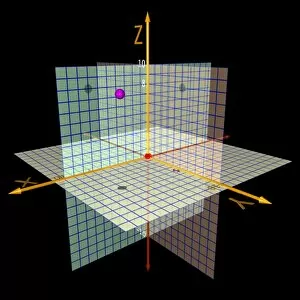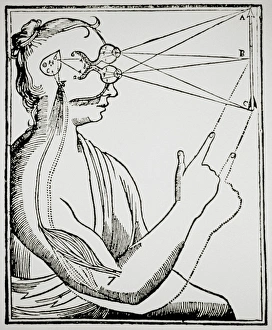Descartes Collection (page 4)
"Exploring the Brilliance of Descartes: Unveiling the 17th Century Optics Theory" Step into the world of Rene Descartes
All Professionally Made to Order for Quick Shipping
"Exploring the Brilliance of Descartes: Unveiling the 17th Century Optics Theory" Step into the world of Rene Descartes, a renowned French mathematician and philosopher whose groundbreaking ideas continue to shape our understanding of reality. In this captivating portrait, we see Descartes seated at his desk, deep in thought, as he delves into his revolutionary optics theory. Descartes' contributions to philosophy and mathematics are unparalleled. His PSCI2A-00082 work laid the foundation for modern scientific inquiry, challenging traditional beliefs with logical reasoning and skepticism. With meticulous precision, he dissected every aspect of existence, seeking truth through rationality. This image captures not only Descartes' intellectual prowess but also provides glimpses into his personal life. The serene ambiance surrounding him hints at his home environment—a sanctuary where he explored profound philosophical concepts that would forever change our perception of reality. As we move beyond the confines of this intimate setting, we encounter other significant landmarks associated with Descartes. A visit to his tomb serves as a pilgrimage for those who admire his genius and seek inspiration from his legacy. Meanwhile, a majestic statue immortalizes him as an emblematic figure in history—forever reminding us of his immense contributions. Born in France—the birthplace marked by reverence—we witness how Descartes' brilliance transcended borders and time periods. Even today, scholars study Portrait of Rene Descartes painted centuries ago on canvas—an enduring testament to his enduring influence. Descartes remains an enigmatic figure whose ideas continue to captivate minds across generations. His unwavering commitment to reason and logic challenges us all to question assumptions and embrace critical thinking—a legacy that will forever shape our pursuit of knowledge.






































